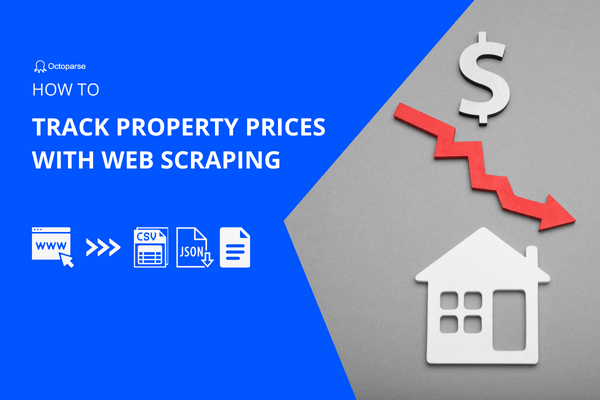Professionals in the real estate sector need to have access to accurate and current data more and more as the market expands. For academics, investors, and real estate brokers, realtor data—such as past sales, property listings, and market trends—can offer insightful information.
However, it can be wasteful and time-consuming to manually gather this data. Web scraping is used in this situation to help you solve this problem. In this article, you can learn how to scrape real estate data from Redfin, which offers complete information on homes, including their characteristics, locations, and pricing.
Understanding Redfin Data and Its Uses
Redfin is a leading online real estate brokerage known for its innovative approach to buying and selling homes. Established in 2004, Redfin offers a user-friendly platform with comprehensive real estate listings, pricing data, and neighborhood insights. What sets Redfin apart is its emphasis on transparency and customer satisfaction, highlighted by tools like its home value estimator and salaried real estate agents prioritizing client needs. By leveraging technology to streamline the real estate process, Redfin has transformed the industry, making home transactions more efficient and cost-effective for consumers.
What kinds of data can be collected from Redfin.com
- Property Details: Address, Price, Property type (e.g., single-family home, condo, townhouse), Square footage, Number of rooms, Lot size, Year built, Description, etc.
- Listing Information: Listing agent details, Listing status (active, pending, sold), Listing date, Days on market, Price changes, etc.
- Historical Data: Sales history, Property tax information, Price history, Market trends, etc.
- Other Public Data: Property Features, Agent Information, Location Data, Images, etc.
Case Studies of Using Scraped Real Estate Data
Real Estate Pricing Analysis: A San Francisco-based real estate investing company examined local patterns in property prices by utilizing data that was scraped from real estate listings. The company was able to concentrate its efforts on communities that were seeing a spike in property values by looking through the data.
Predictive Analytics for Property Value: A data analyst at a New York real estate company created a prediction model for future property values by using data that was scraped from a real estate website. This made it easier for their clients to decide when to buy or sell real estate.
Competitive Pricing Strategy: A property listing firm used scraped data to understand the competitive landscape in various geographical markets. They could see the pricing strategy of other players, compare amenities provided, and formulate their own competitive pricing strategy.
Tenant Research: To reduce the danger of property damage and payment failures, property management organizations thoroughly investigated prospective renters using data that had been collected from real estate listings.
Market Trend Analysis: Market Trend Analysis: A London-based real estate developer employed data scraping techniques to examine market trends, encompassing alterations in customer inclinations (such the need for eco-friendly homes) and oscillations in the quantity of accessible properties. Their development tactics were guided by this information, which made sure that their next ventures reflected the needs of the market.
Using web scraping to its full capacity can provide you a competitive advantage and access to insightful information.
Tools and Techniques for Ethical Data Scraping
Respecting the terms of service of the websites you are scraping and adhering to ethical standards are crucial when it comes to web scraping. Several methods and instruments are available to guarantee moral data scraping
APIs: A lot of websites, including Redfin, provide Application Programming Interfaces (APIs), which let programmers access data in an allowed and structured way. With the use of APIs, it is possible to scrape real estate data conveniently and legally without running afoul of the law.
Respectful Crawling: It’s important to treat websites’ bandwidth and resources with consideration when you scrape the content. To lessen the strain on the website’s servers, employ caching techniques, restrict the number of concurrent connections, and set proper intervals between requests. By doing this, you can lessen the chance that your scraping actions will be hindered or cause interruptions.
Web Scraping Software: These days, the market is flooded with online scraping software. For web scraping, tools such as Octoparse offer intuitive user interfaces and automated features. With the help of these tools, you may browse websites, create scraping rules, extract data, and save it in an organized manner.
How to Scrape Redfin Data Without Coding
After discussing the fundamentals of real estate online scraping, let’s take a closer look at a step-by-step tutorial on how to scrape Redfin easily even without any coding.
Step 1: Create a new task for scraping Redfin.com
Copy the URL you want to scrape from Redfin.com and paste it into the search bar on Octoparse. Then click “Start” to create a workflow or start the auto-detecting.
Step 2: Auto-detecting Redfin real estate data
After the targeted website finishes loading in the built-in browser, use the auto-detection feature to scrape the data you need.
Octoparse will highlight all identified data within the browser when you select “Auto-detect webpage data” in the Tips panel. On the “Data Preview” panel at the bottom, you may see each data field and determine whether the “guess” was a decent one.
Step 3: Create and modify the scraping workflow
After confirming that you have all the necessary information, select “Create the workflow.” A scraper on the right will then be automatically generated by a scraping procedure. It’s a flow chart that illustrates how data scraping works. In the data preview area, you may immediately update the data fields by renaming them or removing unnecessary information.
Step 4: Run the Redfin scraper and export data
After verifying all the information of the scraper one more time, press the Run button. You may now select to use the cloud or your local devices to complete your scraping work. Even though real estate data is always changing, entrusting Octoparse’s cloud servers with the scraper and setting it to run automatically could be your best bet for getting the most recent information. Cloud servers are able to provide you with the most recent information about Realtors while processing scraping operations faster and around the clock.
After the scraping procedure is finished, you may export the data that was scraped for further use to Excel or a database like Google Sheets. For instance, you may perform market research and keep an eye on your rivals by cleaning and analyzing data.
Wrap up
Investors, researchers, and real estate brokers can benefit greatly from real estate web scraping, especially from Redfin. You may find investment possibilities, make well-informed judgments, and obtain a competitive edge in the market by utilizing realtor data that has been scraped.
Always remember to use appropriate tools and procedures, optimize your scraped data using best practices, and adhere to ethical scraping activities. Recognize the difficulties and restrictions associated with online scraping, and keep yourself updated on moral and legal issues. You may fully realize the potential of real estate web scraping and scrape realtor data like an expert with the appropriate strategy and mentality. Take a look at Octoparse for more helpful information, begin considering your options, and achieve more success in your real estate ventures.




